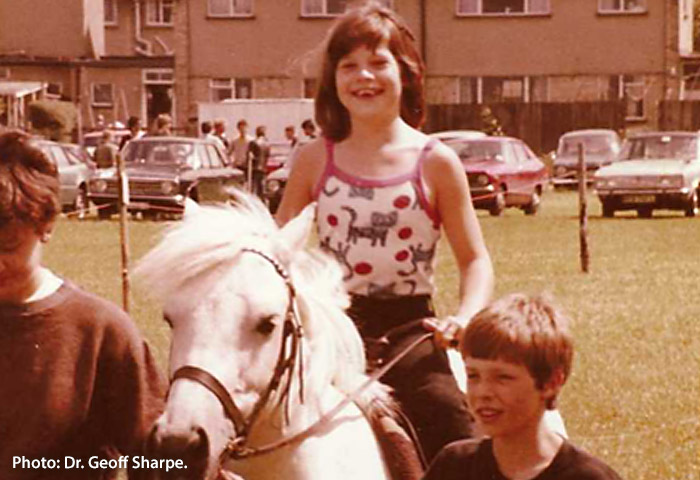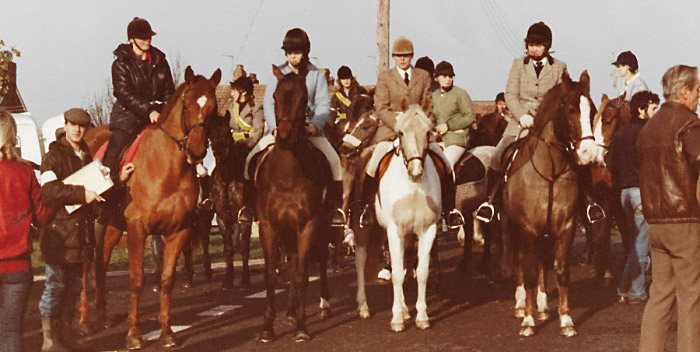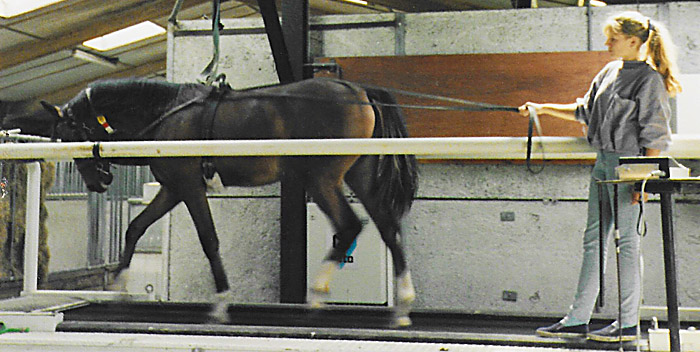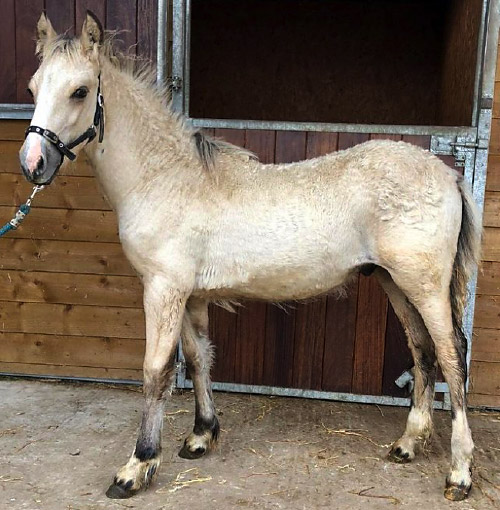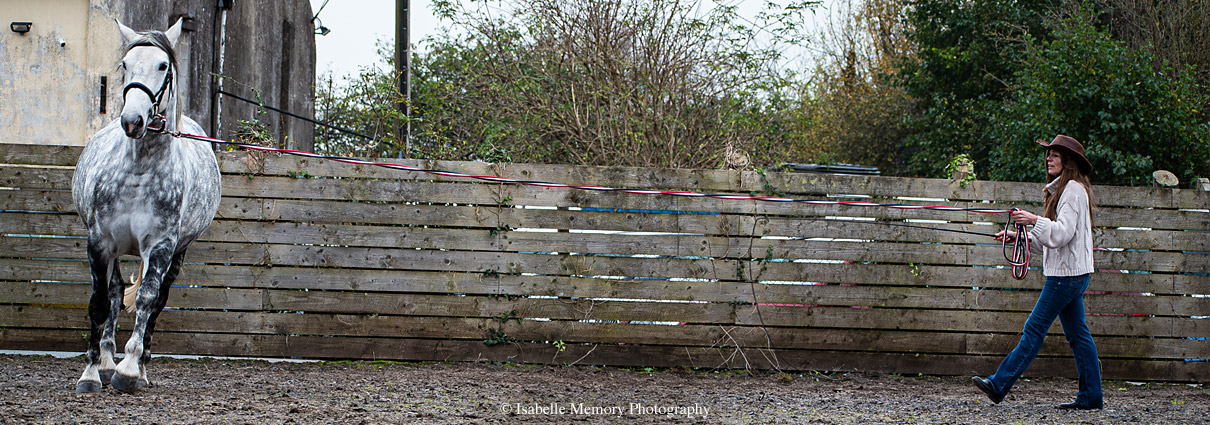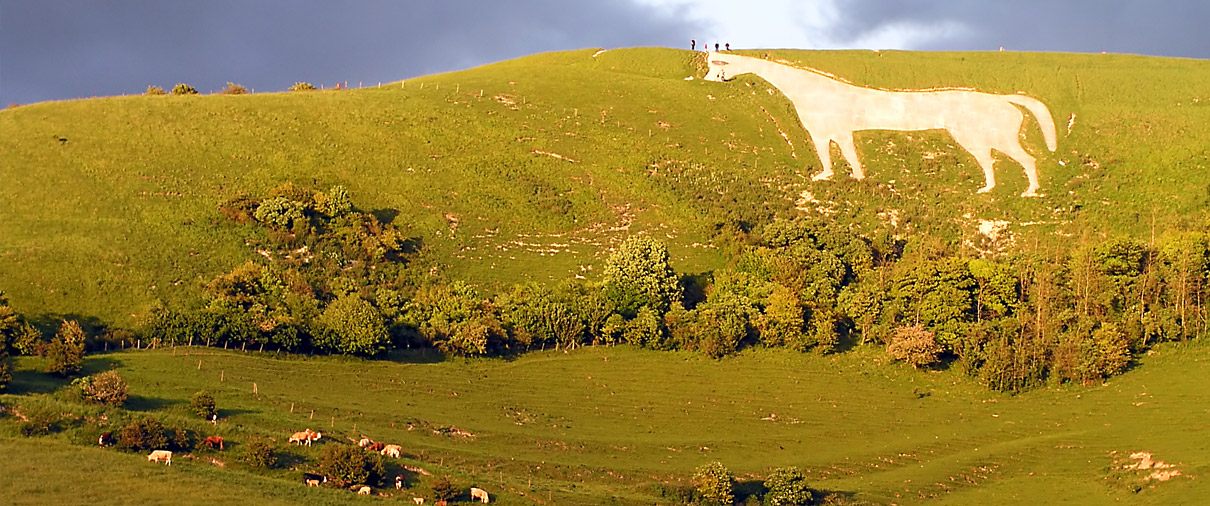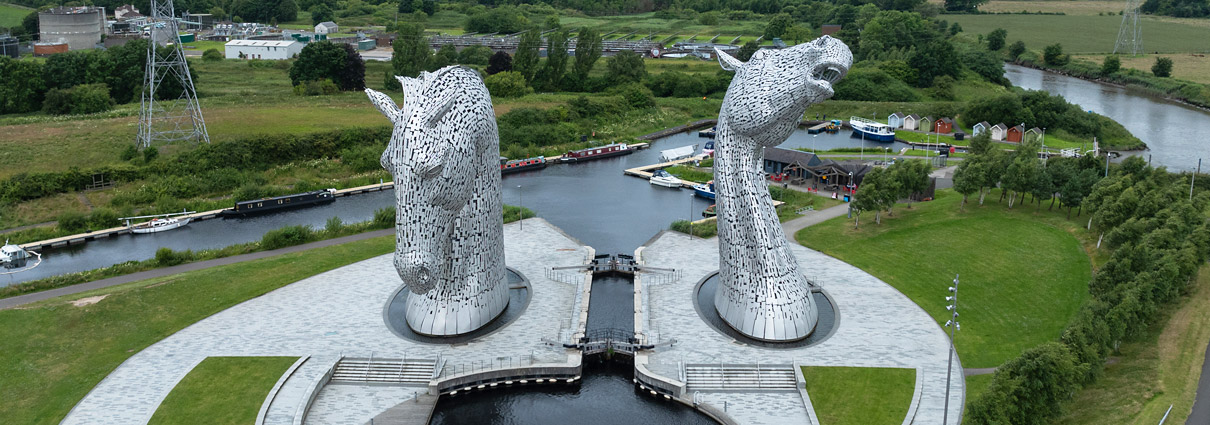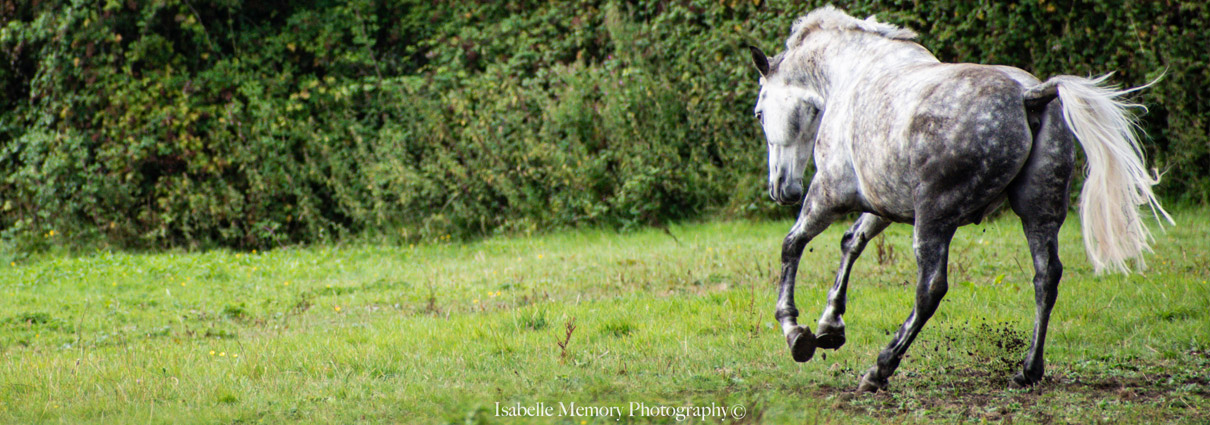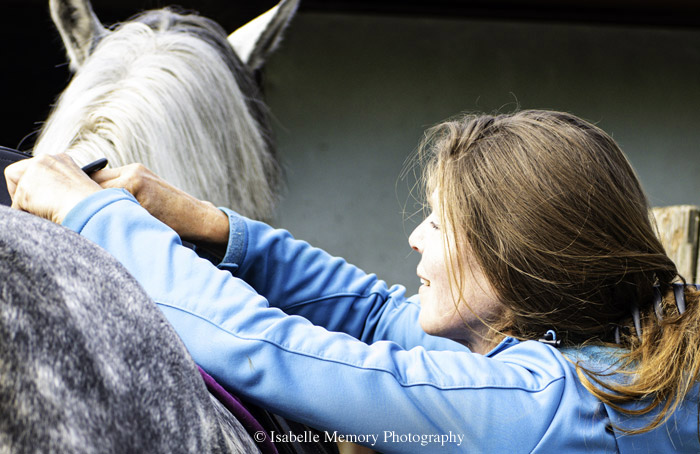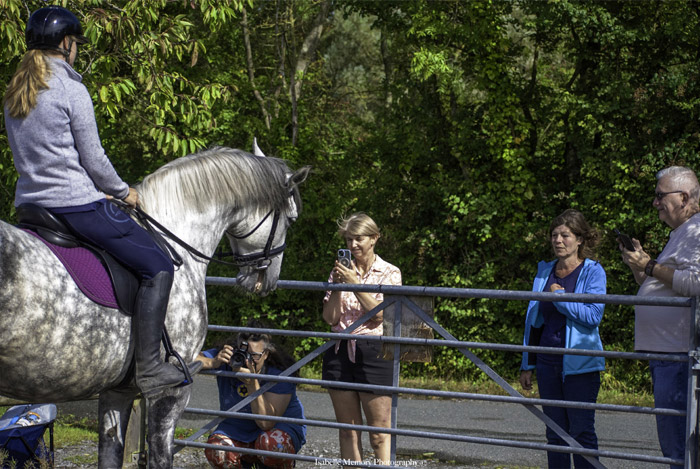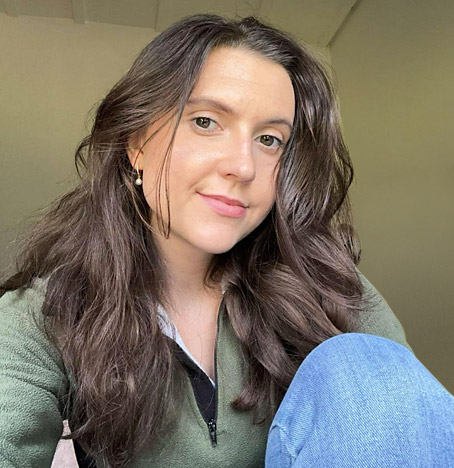Lifelong obsession with horses.
DECEMBER 2024
My obsession with horses began when I was four years old. By the age of eleven, I was fully ensconced in the horse world and worked as an event-groom, riding, exercising and caring for competition horses daily – A job which absorbed me for nearly 10 years.
Following that, as part of my Batchelor’s Degree (BSc.), I spent several months as an Equine Research Assistant at the Research Institute for Animal Husbandry in Lelystad, The Netherlands (which is now part of the Wageningen Bioveterinary Research (WBVR Group) of Wageningen University & Research (WUR)).
I carried out practical and statistical research into the effects of exercise and nutrition on the incidence of Osteochondrosis (a bone disorder), in young Dutch-Warmblood horses. This became my degree dissertation. After graduating, I returned there to study further with the Equine Science Research Team for a similar period too.
How event horses (left and second to left) relax between competitions. Sponsored 30-mile ride in Bristol on ‘Bonnie Girl’ (second from left) with a few friends in 1984.
Practical research in equine science in The Netherlands – Measuring the heart rate of Dutch Warmbloods during exercise on a treadmill. 1991.
For quite a few subsequent years, I focused on establishing my career in communications and scientific writing, but I returned to horses, with the obsession even stronger than before. Now alongside having my own horses, some of my international clients are focused on equine science and veterinary equine medicine, and I very much welcome the opportunity to work with more from the equine sector.
Grasshopper at five-months-old.
Essence
Horses are my essence. I am inspired by their sheer physical beauty and power. And I can connect and communicate with them on a deep level. Spending time with them is therapeutic, and riding and all the stable and field work involved in their care are great for fitness, strength and suppleness. I thoroughly enjoy working with my horses and helping others with theirs.
“A pony is a childhood dream. A horse is an adulthood treasure.”
Rebecca Carroll.
I bought all my current horses as unhandled foals or very young ‘babies’ – My ‘blank canvas’. And I have raised them, trained them, backed them and brought them on as riding/liberty horses. It has been enormously rewarding and a joy to see them grow, develop and thrive.
Brosnan at three-years-old. The coats of iron-grey horses generally become progressively lighter as they get older. When Brosnan was very young, he was very dark grey. He is now dapple grey. He could turn completely white over the years.
Breed-wise, they are Irish Sport Horses (ISH), which have a sociable, vivacious temperament, and know how to enjoy life. My horses don’t just stand in a field and graze; they play together daily still before they settle down to grass. They are still young and have plenty ahead of them.
Training horses takes many years of consistent work and a lot of patience.
Way of life
However, keeping and working with horses is hard work, continually physically and mentally demanding, and at times, it can be downright dangerous. It requires patience, commitment, and determination, seven days a week, and in any weather. It’s a way of life.
The horse world is mostly a strong and close-knit community. We help each other out, wherever we are, and at whatever time. Horses are, of course, beyond ‘nine-to-five’. I am frequently up at midnight and later, messaging with local and international friends about ‘horsey’ issues. And I often work with other people and their horses, training, advising on behavioral and care issues, as well as clipping. I pretty much ‘live in my wellies’!
What I really love about horses is that there are always new challenges and plenty more to learn.
Healing powers
Many enjoy horses for equine sports and competition, ranging from eventing, showjumping, dressage, cross-country, polo, racing and point-to-point, to carriage driving, liberty and working equitation. Some rely on horses for work, such as the Police, or for ceremony, such as the Military. And many people just enjoy them for recreation. I am particularly interested in their role in therapy, healthcare and wellbeing. I believe that they have an important role to play in this. With their extreme sensitivity, horses have an incredible and innate ability of knowing when someone is in pain or needs help. And scientific evidence of the benefits of equine assisted therapy in several groups of people is accumulating.
One of the earliest organizations in the UK to recognize this was the Riding for the Disabled Association (RDA), which aims to enrich lives through the unique bond between people and horses. The organization was established in 1969. It now supports more than 25,500 disabled children and adults through activities including riding, carriage driving, and non-riding experiences.
The RDA are pioneers in the therapeutic use of horses, leaders in disability sport, and the only major UK charity focused specifically on the health and wellbeing benefits of bringing people and horses together. The RDA’s programs are designed to improve mobility, boost physical health and mental wellbeing, build confidence, and teach new skills.
Another great example of equine therapy, which I very much hope to visit in 2025, is HorseBack UK – an established charity based in Scotland that uses horses to inspire positive change, encourage confidence and self-esteem, and promote recovery in individuals, for example, ex-military personnel who suffer from Post-Traumatic Stress Disorder (PTSD).
Through horsemanship and outdoor activities, HorseBack UK deliver nationally accredited personal development and wellbeing programs to help participants build new coping strategies and life skills. There are several similar well-known projects that have been established for many years which have proved successful in helping military veterans with PTSD in the US too. In addition, several trials have found adolescents with mental health issues have positively benefitted from equine assisted therapy.
HorseBack UK uses horses to inspire positive change, encourage confidence and self-esteem, and promote recovery in individuals.
A big inspiration to artists
Horses have appeared in works of art throughout history, indicating their significance in people’s lives. Particularly through large ‘public art’ installations, ranging from cave paintings made 17,000 years ago to the statues and artworks of the Greeks and Romans, such as Rome’s Equestrian Statue of Marcus Aurelius, which dates from 175 AD. Leonardo da Vinci was commissioned to create the largest equestrian statue in the world in 1482, but it was never completed. Leonardo did extensive preparatory work for it but produced only a large clay model, which was later destroyed. However, it was recreated in bronze from his original drawings and notes in a project started by Charles C. Dent and completed through the foundation that he set up – Leonardo da Vinci’s Horse, Inc. (LDVHI), by in the late 20th Century. One of the first casts made stands in The Hippodrome of San Siro, a horse racing venue in Milan, Italy. ‘Leonardo’s Horse’ in Milan. It is 7.3 meters high and was unveiled in 1999.
Westbury White Horse, Wiltshire.
Even more visible are the white horses carved into chalk hills of southern UK, which were created for a variety of reasons, including to symbolize local identity, to commemorate an event, or to represent a tribal symbol. The oldest of these is the Uffington White Horse, in Oxfordshire, which dates from approximately 3,000 years ago and is thought to represent a tribal symbol, perhaps connected to the builders of Uffington Castle. It may also be a depiction of a ‘solar horse’ because of its alignment with the sun. Wiltshire, which neighbors Somerset, has a large number of White Horses (14 in total), many of which are open to the public
The spectacular Kelpies in Falkirk.
The Kelpies are a spectacular recent public artwork (2013) located between the Scottish towns of Falkirk and Grangemouth.
The two, 30-meter-high, steel horse heads were designed by Andy Scott and pay homage to the heavy horse of Scottish industry and economy, which pulled the wagons, ploughs, barges, and coal ships that shaped the Falkirk area.
And, of course, there have been many artists who have risen to fame through well-known works featuring horses, many around equine sports, such as George Stubbs in the 1700s.
Equine Art Days
I have mentioned before how rich Somerset is visual arts. This Summer, I organized the first equine art days to provide a small number of talented local professional artists with an opportunity to spend “A Day In the Life of a Horse”, get up close to my horses, gather inspiration and create some amazing artwork from the experience. Some of the artists that attended also run art therapy projects themselves.
A little bit of Hollywood in Somerset? Lights. Camera. Action! Pierce would be proud of his namesake! Brosnan blowing off steam in the field.
Holding a small group was essential to ensure that the horses behaved as naturally as possible and were not stressed by an influx of people. We were lucky with the weather, and all enjoyed a really great, happy day. In particular, the horses loved it and they all behaved impeccably (well…almost!). Even the one small, but spectacular, misdemeanor, when one of the horses was briefly overcome with the excitement of it all, provided some very impressive dynamics for the artists. Nice one, Brosnan!
For me, it was great to be ‘back in the saddle’ with event management. Organizing a comparatively small ‘happening’ still required quite some pre-event work, and I was grateful to have some help with the preparations and day itself from equestrian friend, Dominica Rogan-Pfaff.
An opportunity to shine
The artists were greeted on their arrival by a bevy of friendly neighs on their arrival, met the horses in their stables and the yard, saw them being lunged and ridden, and then were able to see the horsepower ‘cranked up’ as they watched the animals turned out into the field to play and graze.
All the artists observed, took photos and made sketches, finding out more about each horse and person in turn. It was an opportunity for the horses to really shine, which provided the artists with their chance to excel.
“You’ve got something,
And it’s always showing.
Light It Up,
Let them know it.”
Light It Up – Will Young.
Quality art
Quality artwork takes time to produce. I will be introducing each of the artists and sharing the results of their work from the day in a series of blogs in due course, but you can get an impression of the day itself in the photo gallery below.
Isabelle Memory
A passion for equine photography
Another equestrian friend, Isabelle Memory, who is a professional equine photographer and artist, joined us for the day and took the wonderful photographs that accompany this blog in the gallery. Photography is of course an art in itself. While we all snap away with the advanced cameras that are available on our phones, the professional photographers’ art, creativity and skill approaches a whole other dimension that still has enormous value.
Isabelle’s passion for photography started when she got her first pony, Rupert, as a teenager. She could not stop taking photos of him.
One day, she took him to her local beach for a photoshoot with an equine photographer. The result was a series of beautiful photos that will last a lifetime. Unfortunately, Rupert passed away in 2020, and she is now more grateful than ever to have the gorgeous professional photographs of them together. It showed her the importance of photos and how they keep memories alive.
“My portfolio is full of horses and dogs. They say, if you want to know what someone loves, look at what they photograph. That is certainly true for me!” – Isabelle Memory.
She is now a freelance photographer based in Somerset with specialisms in equine, canine and agricultural photography, as some portrait, product, fashion and commercial photography.
“As a specialist equine photographer, passionate horse rider and horse owner, I love capturing the special bond between horse and human.” – Isabelle Memory.
Bringing out the best in others
The art day certainly created a wonderful opportunity for interaction between artists and horses.
An interesting man embedded in the world of horse racing once told me that he believed that much modern day stress might be in part linked to our general departure from living quite so close to horses since the introduction of transport with engines and wheels instead of hooves. Perhaps he has a point.
Undoubtedly, horses still bring many positives to millions of people and I am delighted that mine have inspired a few in their own expert expressions.
“Don’t waste who you are.
Light It Up.
Let them know it.
You’re too loud to be crying.
Too bright to stop it glowing.
Light It Up!”
Will Young.


